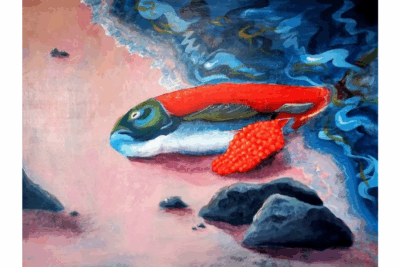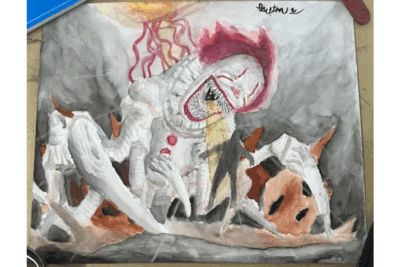The lights dimmed and the curtains opened as the Jamaican National Anthem began to blare through the theater in Umble. The culmination of almost a year’s worth of work by producer Doug Hallman and director Taylor Stansberry, “LifeSign,” the documentary on Deaf culture and opportunity in Jamaica exposed viewers to an entirely new format for a senior show as well as a new way to look at what it means to be a global citizen.
The premier was a success, with 146 people, according to Doug Caskey, coming out to see the documentary, ranging from community members to ASL students, faculty and the general student body. Students seemed generally impressed with the documentary that highlighted the necessity for improvement in the lives of deaf people in Jamaica. Far from the stereotypical sandy beaches and palm trees most people think of when they think of Jamaica, “LifeSign” revealed the Deaf people of Jamaica fighting for education, driver’s licenses, equal employment opportunities, and the right to teach their hearing children sign language. Though many people think of Jamaica as a tourist trap, in reality it’s a Third World country and is incredibly impoverished, making life difficult–especially for those who cannot hear.Sarah Noah, a senior English major said that “LifeSign” provided her with “an interesting glimpse into the country.”
More than just considering the Deaf community in Jamaica though, “LifeSign” made her “think about the Deaf community here in the U.S.” Noah stated that she’d never really considered how many people and cultures are out there that she hasn’t thought about. While both “LifeSign” and her SST experience in Peru made her consider cultural exploration, Noah is beginning to consider the vast opportunities for cultural exploration here in the U.S.
Theater professor Doug Caskey stated that it was fun to see the documentary at different stages throughout its creation. He said that “tonight, even more than several times before, the spirit of the children came through.” Caskey most vividly recalls the scene in which the children are standing against the wall facing the cameras. It is engraved in his mind because seconds before that, Felicia, who was profiled throughout much of the documentary, stated that the hearing children of deaf parents would make the difference for deaf culture and the future. Though children are the future for everyone, they will be incredibly important for deaf adults, as they will serve as bridges to connect the hearing and deaf worlds.
Ryan Hallman, brother of producer Doug Hallman, said that the documentary made him think about a type of culture that he’d never really considered. Hallman went on to state that “LifeSign” gave him a preview into a different world.
Taylor Stansberry, the director of the documentary, said that her favorite scene was the scene in which Felicia’s husband, Damien, is shown cutting sugarcane. She likes it because it’s “so very Jamaican.” When asked what she wanted viewers to take away from the documentary, her response was awareness. She simply wants people to gain knowledge about the conditions of the Deaf in Jamaica.
Doug Hallman, the producer of “LifeSign,” states that he wants viewers to understand the amount of privilege we have in the United States, “even those who experience discrimination because they’re disabled here are more fortunate than those in the outside world,” states Hallman.
Hallman and Stansberry both admit that though the senior show is over, the project definitely isn’t. They want to do one more round of editing, which for Taylor and Doug, who reported that some weeks they spent anywhere between a minimum of four and a maximum of 80 hours on the documentary, may make for one long semester. For those of you who are interested in viewing the documentary, it will be available for purchase soon, and fifty percent of the proceeds will go to improve the situation of the deaf in Jamaica.


